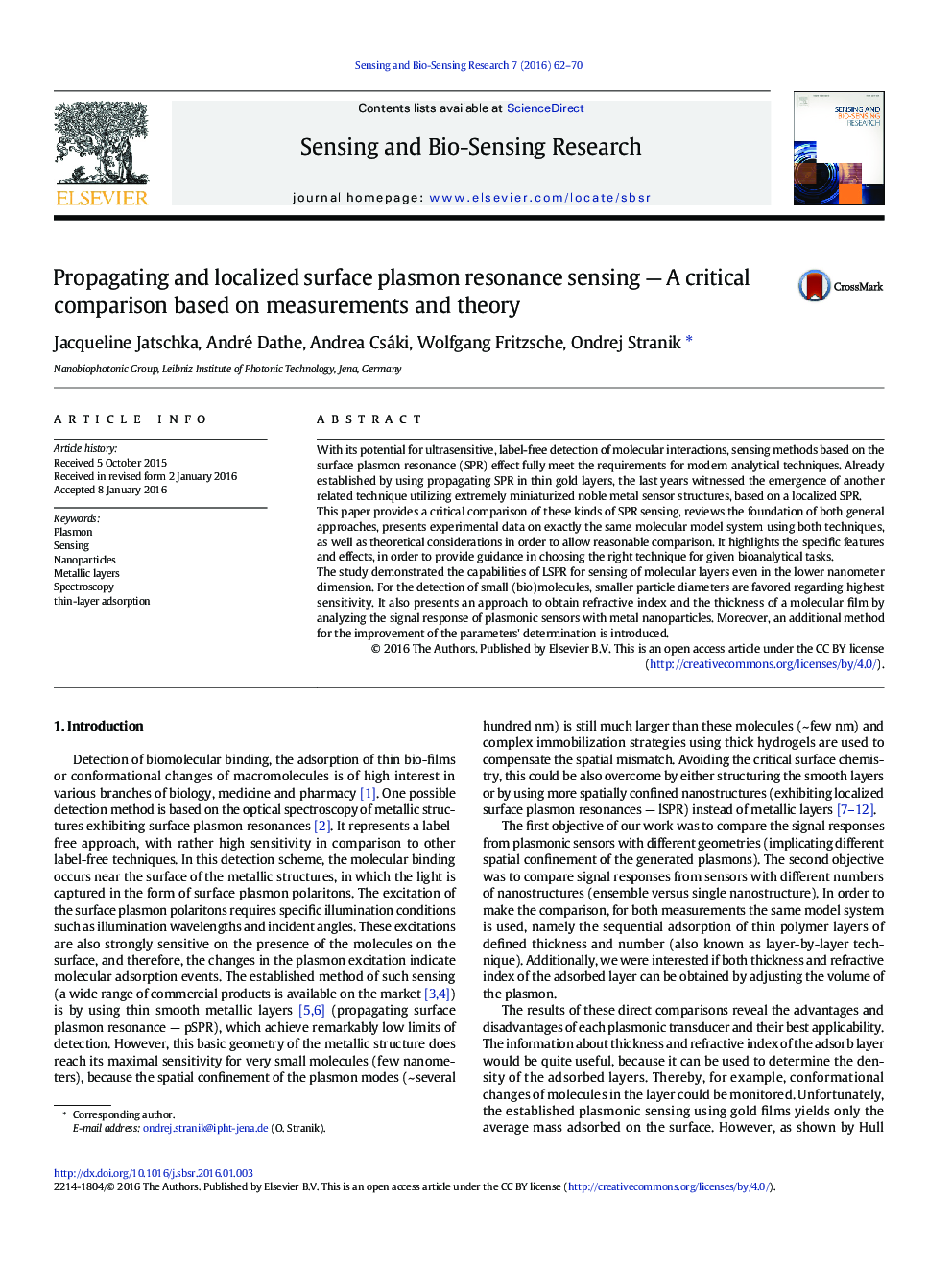| کد مقاله | کد نشریه | سال انتشار | مقاله انگلیسی | نسخه تمام متن |
|---|---|---|---|---|
| 807365 | 1468290 | 2016 | 9 صفحه PDF | دانلود رایگان |
• We compared plasmonic transducers with different spatial confinement: a planar layer and spheres of different sizes.
• We analyzed the responses of these systems and experimentally measured them by the subsequent adsorption of molecular layers.
• We showed that smallest spheres yield the strongest non-linear dependence of the signal on deposited layers thickness.
• We showed that the refractive index and the thickness layer can be obtained by analyzing the non-linear signal response.
• We experimentally demonstrated that adsorption of the layers can be detected on a single nanoparticle.
With its potential for ultrasensitive, label-free detection of molecular interactions, sensing methods based on the surface plasmon resonance (SPR) effect fully meet the requirements for modern analytical techniques. Already established by using propagating SPR in thin gold layers, the last years witnessed the emergence of another related technique utilizing extremely miniaturized noble metal sensor structures, based on a localized SPR.This paper provides a critical comparison of these kinds of SPR sensing, reviews the foundation of both general approaches, presents experimental data on exactly the same molecular model system using both techniques, as well as theoretical considerations in order to allow reasonable comparison. It highlights the specific features and effects, in order to provide guidance in choosing the right technique for given bioanalytical tasks.The study demonstrated the capabilities of LSPR for sensing of molecular layers even in the lower nanometer dimension. For the detection of small (bio)molecules, smaller particle diameters are favored regarding highest sensitivity. It also presents an approach to obtain refractive index and the thickness of a molecular film by analyzing the signal response of plasmonic sensors with metal nanoparticles. Moreover, an additional method for the improvement of the parameters' determination is introduced.
Journal: Sensing and Bio-Sensing Research - Volume 7, March 2016, Pages 62–70
